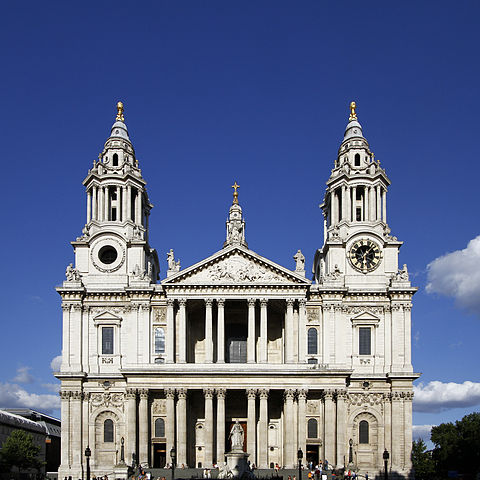
St Paul’s Cathedral
A Cathedral For Christmas
St Paul’s Cathedral is one of the UK’s most iconic buildings. The present-day cathedral was consecrated on the 2nd of December 1697, and declared officially complete on Christmas day 1711, but in fact there has been a religious building on the site since around 604 CE, and so the cathedral has born witness to a long and rather interesting history. Let’s explore some of the numerous events it has housed over the centuries.
Marriages At St Paul’s
St Paul’s hosts only a very small number of weddings each year and, as it is not a parish church, there are specific conditions which must be met before one can take place at the cathedral. The cathedral will only marry members of the Order of the British Empire, the Order of St Michael and St George, the Imperial Society of Knights Bachelor, or the Cathedral Community (which includes staff and volunteers). The children of any of the above may also be married at St Paul’s. All wedding applications must go through the Archbishop of Canterbury. There have been two particularly notable weddings hosted by St Paul’s. The first was the wedding of Prince Arther, the eldest son of Henry VII, to Catherine of Aragon in 1501. Catherine would later and more perhaps more famously become Henry VIII’s first wife after Arthur died. The second was the marriage of then Prince Charles to Lady Diana Spencer in 1981.
Funerals And Burials
St Paul’s has hosted three state funerals. The first was for Admiral Horatio Nelson who was killed at the battle of Trafalgar on the 21st October 1805. Though the battle had led to his death, Nelson had won what was a crucial naval engagement with France, and subsequently became a national hero. His body was preserved in a barrel of rum as it was transported to London for his funeral on the 9th January 1806. Afterwards, Nelson was buried in the Cathedral Crypt.
Another Napoleonic War hero, Arthur Wellesley, the Duke of Wellington, was also given a state funeral at St Paul’s after his death in 1852. An estimated 1.5 million people gathered to watch the funeral procession from Chelsea Hospital to St Paul’s, and around 15,000 people congregated inside the cathedral for the funeral. He too is buried in the Crypt.
The most recent state funeral to have been held at St Paul’s was that of Sir Winston Churchill in 1965. Whilst Churchill is buried in Oxfordshire, St Paul’s hosted a huge funeral ceremony which was attended by political leaders and royalty from across the globe. As well as these three notable state funerals, the Cathedral Crypt is the burial site of a number of important public figures including King Aethelred the Unready, Scottish microbiologist Alexander Fleming, artist Joseph Turner, and Sir Christopher Wren, the architect who designed the present-day cathedral.
Other Key Events
The Cathedral has been the venue for a number of Royal Jubilee services, the being for Queen Victoria’s Diamond Jubilee, held there in 1897. Since then, St Paul’s has celebrated the Silver Jubilee of King George V in 1935 and the Silver, Golden, Diamond and Platinum Jubilees of Queen Elizabeth II in 1977, 2002, 2012 and 2022 respectively.
As well as these more celebratory and memorial events, it has also hosted a number of grim executions, most notably the hanging, in 1606, of five men who had conspired to blow up Parliament as part of the Gunpowder Plot.
One of the more recent national events hosted by St Paul’s was the National Memorial Service for the victims of the Grenfell Tower fire in west London in 2017. More than 1500 people attended the event to pay tribute to the 72 people who died.
To learn more about the history of this iconic building and the numerous events that took place here visit St Paul’s official website or The Founding of St.Paul’s Cathedral web page at The History of London website.